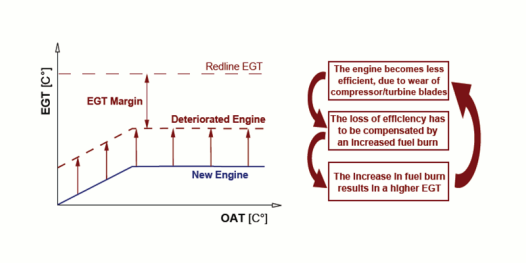2. If a reciprocating compressor has problems with numerous components such as valves, piston rings and cylinder bores its output will decline. Some users measure the time taken for a compressor to pump up a receiver to a given pressure as an indication of such problems.
3. In the case of a Damper, wear on actuators and the linkage gives increased hysteresis. A simple plot of actuator position versus input signal, with increasing signal and decreasing signal, shows the amount of hysteresis and is therefore a measure of wear.
4. Heat exchanger clogging or deposits will reduce performance. This can be set up to give an indication using built-in temperature gauges (with suitable adjustments for flow, ambient conditions etc)
5. In the Oil Industry, plots of load against displacement of Sucker Rod Lift Pumps (also often known as “Nodding Donkeys”) give indications of about 20 different failure modes, including valve wear, or the wrong size valve for well conditions.
6. Even taking the classic example of a pump whose output deteriorates due to impeller wear, deposits etc, which maintenance task is preferable:
- An overhaul at a fixed interval?
- Taking it apart to inspect the condition?
- Or, measuring the performance deterioration? (the Percentage Reduction in Performance could be calculated for the head values at a given flow or flow at a given head)
7. I carried out a study of wafer handling equipment in an electronics plant. Problems with a complex series of wafer handling steps were a big cause of wafer damage and expensive scrap. While a range of parameters (speed, position, motor torque, step time) was being measured, once again, it was not being used. Previously they had tried a strategy of No Scheduled Maintenance, followed by one of a system overhaul at an arbitrary interval. Instead, a system was set up a to give automatic warnings if deterioration in measured performance parameters was noted. These warnings covered a large number of failure modes of complex equipment.
I could go on, but I hope you get the message. While some of the applications of Performance Monitoring require calculations/ algorithms to be set up, these days, the expertise, computing power and algorithms are usually readily available.
Performance Monitoring is a great condition-based technique because:
- It is usually totally non-invasive – indeed it is often carried out while the equipment is normally running
- It uses measurements that are often built-in, and often not used so it can be extremely cost effective
- a large number of failure modes are often covered by a given measurement
- It is truly about maintenance being smart, (rather than busy but not learning much)
It is interesting that there seem to be many more vendors offering packaged monitoring solutions that include performance monitoring and condition monitoring for specific types of equipment (such as reciprocating compressors).
I encourage everybody to look out for more opportunities. I believe they are all over the place. Please get in touch if you agree or disagree, or have any good examples.
References:
1. Moubray, John (1997): Reliability-centred Maintenance, Second Edition
Butterworth Heinemann
2. Nowlan, F. Stanley and Howard F. Heap (1978): Reliability-Centered Maintenance. Washington D.C: Department of Defense
3. http://ataibaviationservices.co.uk/primary-causes-of-engine-removal/



